AUGUST 30, 2017
 Tuesday, August 29, 2017 at 07:40AM
Tuesday, August 29, 2017 at 07:40AM 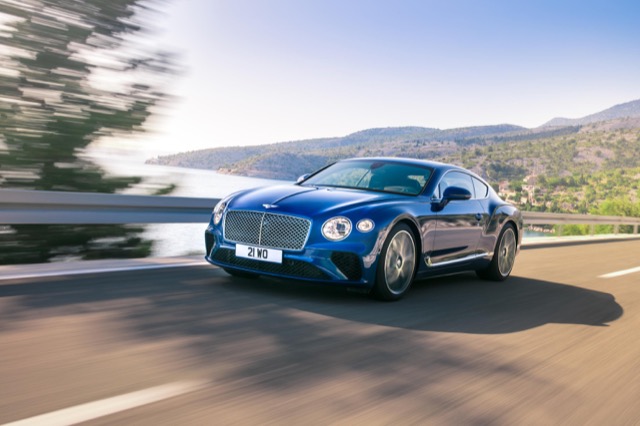
This is all you need to know about the new Bentley Continental GT: Powered by an enhanced version of the 6.0-liter W12 TSI engine with 626HP and 664 lb.ft. of torque and with a dual-clutch, eight-speed gearbox, it's fast. 0-60 mph in 3.6 seconds with a top speed of 207 mph. It's also one of our all-time favorite cars. Over and out.
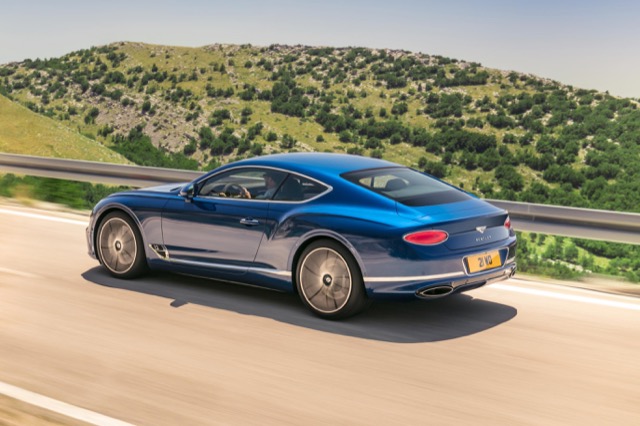
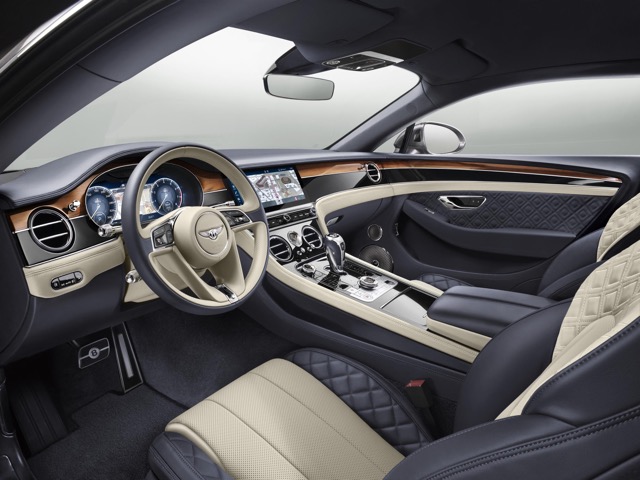
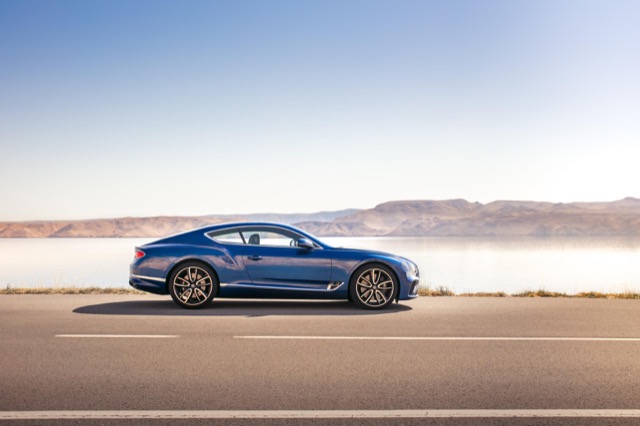
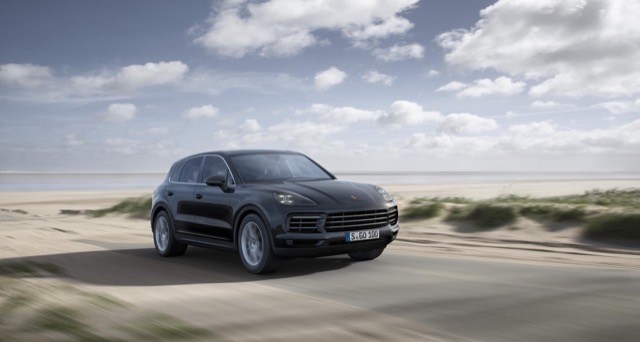
The new 2019 Porsche Cayenne has been unveiled. The Cayenne has a 3.0-liter single-turbo V6 with 340HP and 332 lb-ft of torque (shown in gray), while the Cayenne S (shown in black) has a 2.9-liter twin-turbo V6 with 440HP and 406 lb-ft of torque. A newly-developed eight-speed Tiptronic S transmission and fully variable Porsche Traction Management (PTM) all-wheel drive is standard on all Cayenne models, with rear-axle steering available as an option. The third-generation Cayenne also has a lighter weight chassis that contributes to an overall weight savings of up to 143 lbs. The new body of the Cayenne uses a combination of alloy and steel. The exterior is made almost entirely of aluminum as are the floorpan assembly, front section, and virtually all the chassis components. A technical highlight is the lithium-ion polymer starter battery, which accounts for a weight saving of 22 lbs.
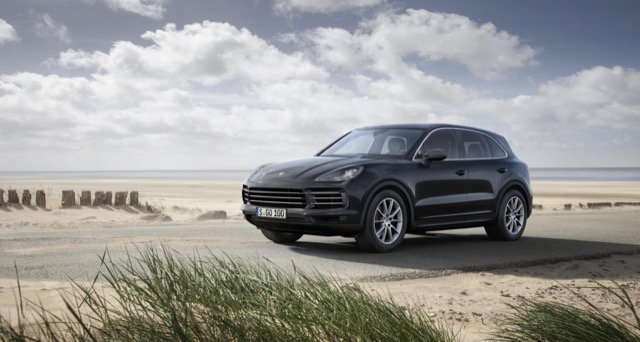 Compared to its predecessor, Porsche PR minions say that "the new Cayenne incorporates major technological and mechanical developments which greatly enhance performance." This starts with the chassis and progresses to a separated link design for the front axle, a multilink rear axle, and – for the first time with the Cayenne – staggered front and rear tire sizes ranging in diameter from 19 to 21 inches that "help to improve on-road driving dynamics." Porsche says that the staggered tire setup in this generation "underscores the fact that the Porsche Cayenne is designed to be the sports car within its segment." (Let's be clear here, folks, it's still a giant truck.)
Compared to its predecessor, Porsche PR minions say that "the new Cayenne incorporates major technological and mechanical developments which greatly enhance performance." This starts with the chassis and progresses to a separated link design for the front axle, a multilink rear axle, and – for the first time with the Cayenne – staggered front and rear tire sizes ranging in diameter from 19 to 21 inches that "help to improve on-road driving dynamics." Porsche says that the staggered tire setup in this generation "underscores the fact that the Porsche Cayenne is designed to be the sports car within its segment." (Let's be clear here, folks, it's still a giant truck.)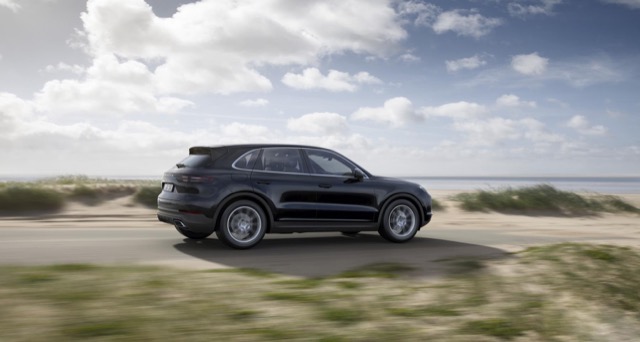
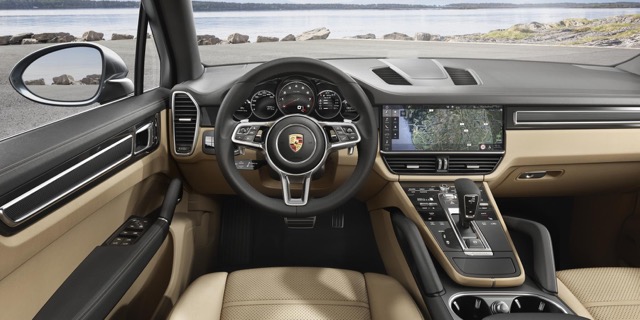
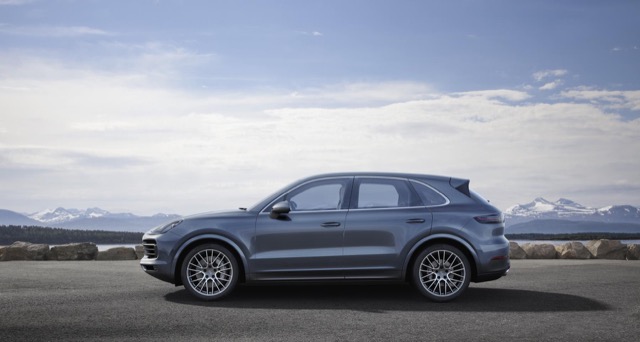
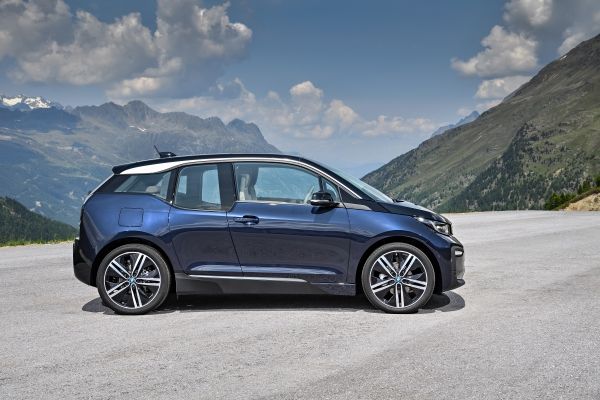
BMW PR minions call the i3 "the bestselling compact battery-electric vehicle in the premium compact segment worldwide since it was launched in 2014." Uh, okay, that pretty much describes a segment of one. At any rate, BMW has announced an updated BMW i3 and the first BMW i3s (below, in red) enhanced with a wider track, wheel arch molding and "horizontal design lines." The new BMW i3 has a maximum output of 170HP, with peak torque of 184 lb-ft, and it accelerates from 0 – 60 mph in 7.2 seconds with an electronic top speed of 93 mph.
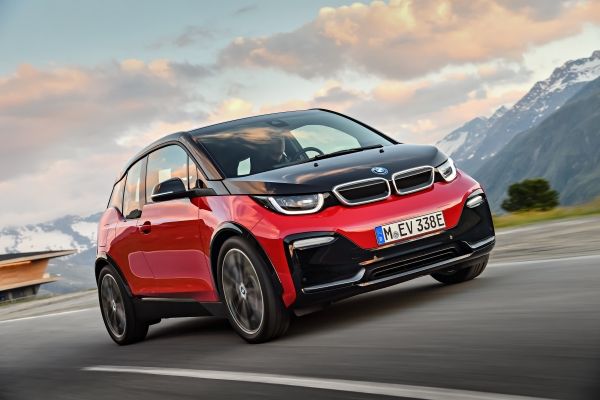 BMW has also announced that a sport-oriented version of the BMW i3 - the BMW i3s - will be available. The i3s has 184HP and peak torque of 199 lb-ft.
BMW has also announced that a sport-oriented version of the BMW i3 - the BMW i3s - will be available. The i3s has 184HP and peak torque of 199 lb-ft. 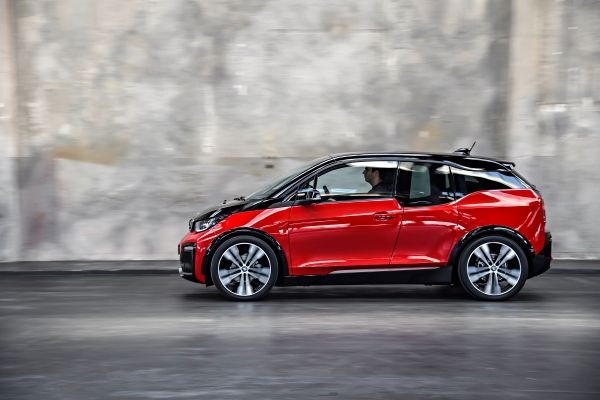 The i3s has a bunch of stuff on it that BMW thinks qualifies it as a "sport" version. Really? Maybe if you squint hard enough. The i3s accelerates to 60 mph in 6.8 seconds and has a top speed of 100 mph, according to BMW.
The i3s has a bunch of stuff on it that BMW thinks qualifies it as a "sport" version. Really? Maybe if you squint hard enough. The i3s accelerates to 60 mph in 6.8 seconds and has a top speed of 100 mph, according to BMW. 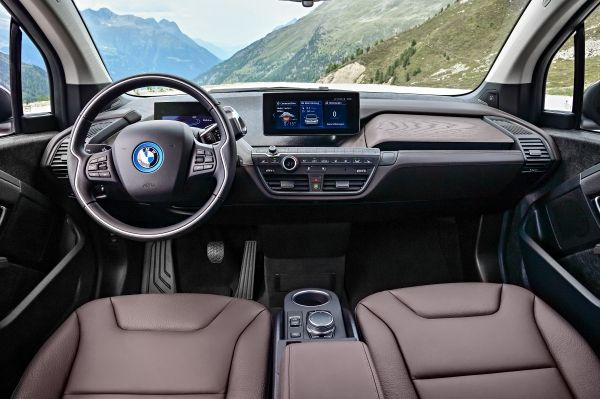
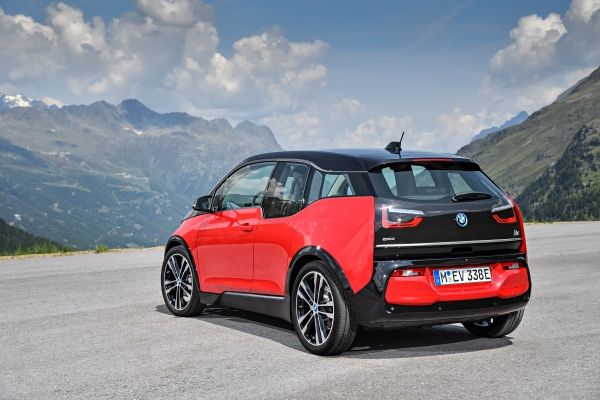 The 2018 BMW i3 and BMW i3s will be unveiled at the Frankfurt auto show in September, with pricing being announced closer to market launch. We've always appreciated BMW's effort with this car, but that's about as far as it goes. They would be much better off making all i3 models with the "s" stuff as standard, for starters.
The 2018 BMW i3 and BMW i3s will be unveiled at the Frankfurt auto show in September, with pricing being announced closer to market launch. We've always appreciated BMW's effort with this car, but that's about as far as it goes. They would be much better off making all i3 models with the "s" stuff as standard, for starters.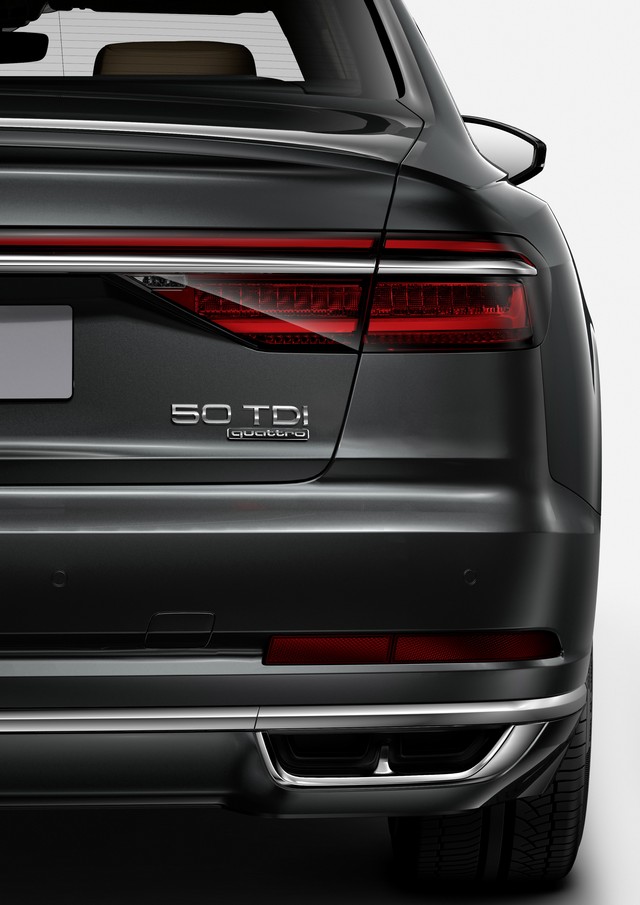
(Audi)
So we received the following press release from Audi today (8/23) and we're going to let you read it in its entirety, with Peter's comments at the end:
Audi is adopting a standardized nomenclature for the power output designations of its worldwide range of automobiles. The names of the model series – from Audi A1 to Audi Q7 – will remain unchanged. Within the model families, combinations of two numbers will replace the various type designations previously used. The new designations stand for the specific power output and apply both to cars with combustion engines and to e-tron models with hybrid and electric drives.
The reference value for the new model designations is the power output of the individual model in kilowatts (kW). Audi is thus subclassifying its model range into different performance levels – each identified by a two-numeral combination. For example, the numeral combination “30” will appear on the rear of all models with power output between 81 and 96 kW. And “45” stands for power output between 169 and 185 kW. The top of the Audi model range is the performance class above 400 kW, which is identifiable by the number combination “70”. In each case the numerals appear along with the engine technology – TFSI, TDI, g-tron or e-tron.
The number combinations identifying the performance levels in the Audi product range increase in increments of five, and they represent the hierarchy within both the respective model series and the brand’s overall model range. According to the new nomenclature, in the future the spectrum will range from the Audi Q2 30 TFSI with 85 kW (combined fuel consumption in l/100 km: 5.4 - 5.1*; CO2 emissions in g/km: 123 - 117*) to the Audi Q7 50 TDI with 200 kW (combined fuel consumption in l/100 km: 6.4 - 5.9*; CO2 emissions in g/km: 168 - 154*). A special place in the line-up is occupied by the high-end, high-performance S and RS models and the Audi R8 (combined fuel consumption in l/100 km: 12.5 - 11.4; combined CO2 emissions in g/km: 292 - 272). They will retain their classic names in reference to their top position in the model range.
“As alternative drive technologies become increasingly relevant, engine displacement as a performance attribute is becoming less important to our customers. The clarity and logic of structuring the designations according to power output makes it possible to distinguish between the various performance levels,” explains Dr. Dietmar Voggenreiter, Board of Management Member for Sales and Marketing at AUDI AG.
The changes will kick off with the new Audi A8 generation in the fall of 2017. First among the two six-cylinder engines to be redesignated will be the 3.0 TDI with 210 kW – as the Audi A8 50 TDI (combined fuel consumption in l/100 km: 5.8 - 5.6**; combined CO2 emissions in g/km: 152 - 145**), and the 3.0 TFSI with 250 kW – as the Audi A8 55 TFSI (combined fuel consumption in l/100 km: 7.8 - 7.5**; combined CO2 emissions in g/km: 178 - 171**).
In the coming months, all Audi model series launched on the market will be assigned the new performance designations beginning when they are offered for sale. Audi will change the designations of the remaining model series in the current product range in time for the new model year changeover in summer of 2018.
Editor-in-Chief's Note: Excuse me but, WTF? The above action indicates the kind of delusional self-absorption and ridiculous overthink that only a German automaker could come up with. The new engine designations are stunningly nonsensical, except to the Audi engineering bureaucrats who came up with them. In an automotive world already burdened with too much alphanumeric mumbo jumbo, this is unmitigated bullshit in its most egregious form. Take a bow, Audi overlords, you have managed to take something that was at least efficiently effective and turned it into a shit show of Brobdingnagian proportions. Nicely done. -PMD

(GM images)
GM will break ground in mid-2018 on a new studio building on its Tech Center campus that will surround the iconic Design Dome Auditorium and viewing patio and connect to the existing Design Center. The 360,000-square-foot expansion will double GM Design’s studio space. Now past its 90th year, GM Design was established in 1927 as The Art and Colour Section by industry design legend Harley Earl. The Tech Center campus opened in 1956 and was the pinnacle of engineering, design and advanced technology at the time. It was designed by world-renowned architect Eero Saarinen and landscape architect Thomas Church. It was named a National Historic Landmark in 2014 by the Department of the Interior and the National Park Service. In 2000, the campus was listed on the National Register of Historic Places. In 1986, the American Institute of Architects honored the Tech Center as the most outstanding architectural project of its era.





